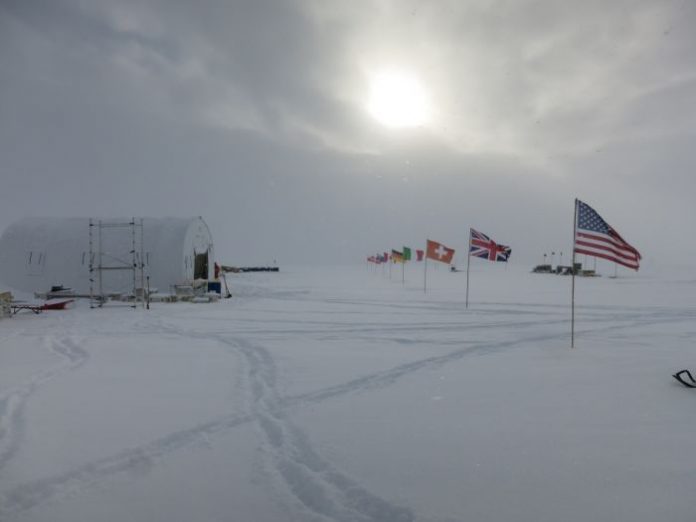
For the first time, thanks to the analysis of an ice core taken from the east coast of Greenland, in Renland, the history of forest fires in Iceland over the last 5,000 years has been reconstructed. The discovery was made by an international team led by Ca’ Foscari University, Venice, and the Institute of Polar Sciences of the National Research Council (CNR-Isp), which published the results in the journal Climate of the Past, adding a fundamental piece to the understanding of the links between fires, climate and human action.
In fact, ice bears the imprint of our planet’s climatic and environmental history and makes it possible to retrieve information about temperatures, volcanic eruptions and even fires from centuries and millennia ago. “Analysing the chemical compounds present in ice cores taken from polar areas helps to reconstruct climatic aspects and atmospheric events of the past,” confirms Andrea Spolaor, researcher at CNR-Isp. “In this case we are talking about compounds such as black carbon, ammonium and levoglucosan, emitted during the combustion of biomass. By measuring these tracers, we have discovered that in the upper North Atlantic, which includes the north-east, south-east and south-west coasts of Greenland and Iceland, fires decreased more than 4,500 years ago due to a decrease in summer insolation, which led to the advance of glaciers and the thinning of vegetation”.
Researchers examined the Recap ice core (Renland ice cap) at Ca’ Foscari University Venice, the Institute of Polar Sciences at the CNR and the Centre for Ice and Climate in Copenhagen. “The climatic factors that most influence fires are temperature, summer insolation, precipitation and humidity, accompanied by the amount and type of vegetation,” continues Delia Segato, researcher at Ca’ Foscari University Venice. “If the vegetation is dense, if a fire starts, it will last longer because there is more fuel available to burn.
According to the study, another reason for the decline in fires in the upper North Atlantic over 1,100 years ago, in addition to climate, is man-made. “The d
ecrease observed in this period is an effect of the loss of vegetation in the Icelandic territory,” the researchers point out. “The Viking colonisation of Iceland caused one of the first environmental disasters in history and even today, after a millennium, the Icelandic forests have not fully recovered. The Vikings deforested extensively, with the loss of more than 25% of the vegetation in less than a century. The settlers, following the customs of their homelands, cut down birch forests for firewood and removed shrubs to open up pasture land”.

The anthropogenic impact in the upper North Atlantic has certainly not stopped in historical times. “In the two most recent centuries, we found that the fire signal has intensified due to climate change and human-caused emissions,” the researchers conclude. “The results of the study show that regions at extreme latitudes constitute one of the places on Earth where climate change is having the most catastrophic effects. In late summer 2020 alone, fires in the Arctic Circle resulted in the emission of 244 mega tonnes of CO2, exceeding those in 2019 by 35%. It is therefore essential to improve understanding of the climate and fire regime in these areas in the past.”



































